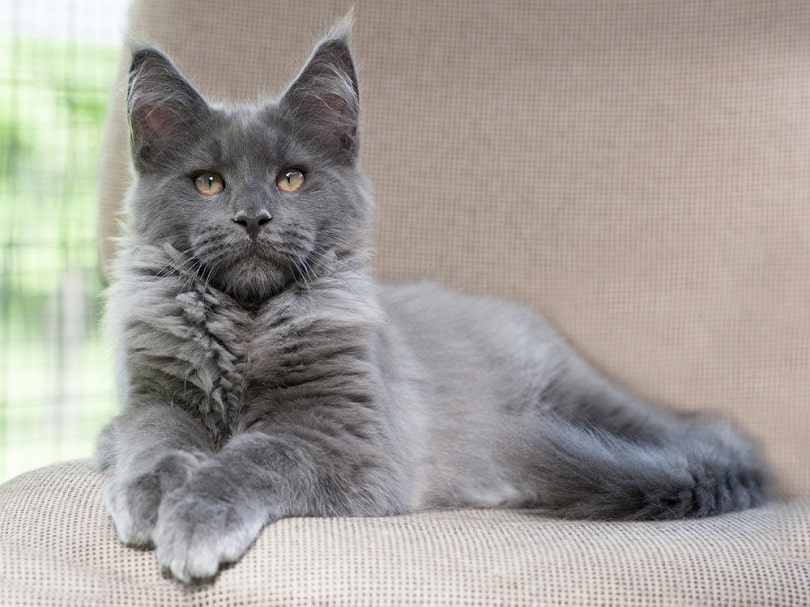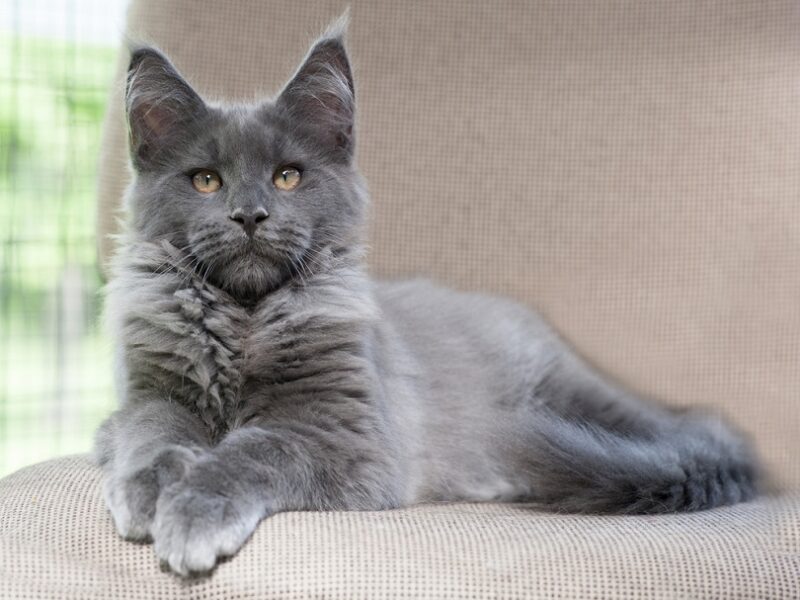Click to Skip Ahead
If you are a soon-to-be owner of a majestic, loving, and stunningly beautiful Maine Coon cat but are still tossing around name ideas, we are here to help you in the process. Whether you are looking for a name that reflects their extraordinary size or one that highlights their friendliness and pleasant personality traits, we’re here to help. Here’s a list of 200 name ideas for your new Maine Coon cat or kitten.
How to Name Your Main Coon
Sometimes, you just need a little inspiration or encouragement to find the perfect name. No worries, we have you covered.
- Keep it One to Two Syllables — Longer names with more than two syllables will be more difficult for your cat to learn. This will make it less likely that they will come your way when their name is called. Most cats respond positively to “kitty, kitty” due to the high-pitched, excitable tone you use and the easily recognizable sound. If you’re dead set on a longer name, try out some nickname ideas to keep it short.
- Make Sure the Name is Appropriate — Remember that you will be making trips to the veterinarian and that your cat will be introduced to everyone who steps foot in your home. Try to choose a name you’re not embarrassed to call aloud or explain to your family and friends.
- Take Personality into Account — Personality is everything, and Maine Coons typically have incredible, loving personalities. Try to find a name that suits their overall demeanor and personality traits.
- Think of Your Favorite Characters in Books, TV, and Movies — If you’re completely stumped, try searching for name ideas in characters of your favorite shows, movies, books, or even comics. There’s certainly no harm in naming your cat after one of your most beloved characters.
- Involve the Household — If your new Maine Coon is going to be a family pet, get the whole family involved in the naming decision. After all, they may come up with some great ideas you would have never thought of otherwise. Not only is this a fun way to name your new family member, but it also makes their name much more special.
Girly Names for a Maine Coone Princess
You may know that female cats can have a bit of a princess complex (and rightfully so). So here’s a list of some girly names that just might fit the bill:
- Abby
- April
- Ava
- Bonnie
- Cleo
- Charlotte
- Camille
- Clementine
- Delilah
- Diva
- Emma
- Fritzy
- Sugar
- Grace
- Greta
- Queenie
- Felicity
- Missy
- Josie
- Princess
- Karen
- Dazzle
- Stella
- Vicky
- Zoey
- Chloe
- Eloise
- Gigi
- Beatrix
- Darcy
- Gia
- Macy
- Libby
- Mitsy
- Blanche
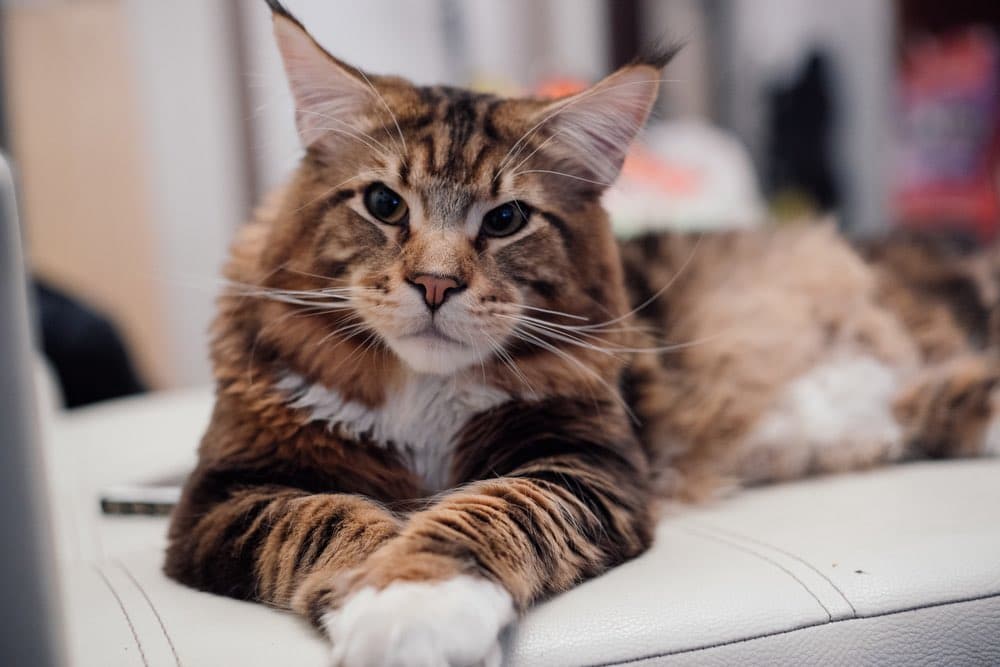
Tough Guy Names for the Boys
Maine Coons are big cats that are built for the hunt. If you’re looking for a name that fits your big, bulky, tough guy, we have some for you:
- Axel
- Amos
- Baine
- Angus
- Apollo
- Dax
- Midas
- Nitro
- Rocky
- Boss
- Titus
- Blade
- Dexter
- Ryder
- Blade
- Aries
- Atlas
- Bruno
- Alaster
- Cyrus
- Damon
- Justice
- Luther
- Marco
- Odin
- Rocco
- Tyson
- Mac
- Kane
- Vince
- Floyd
- Diego
- Trigger
- Fang
- Hannibal
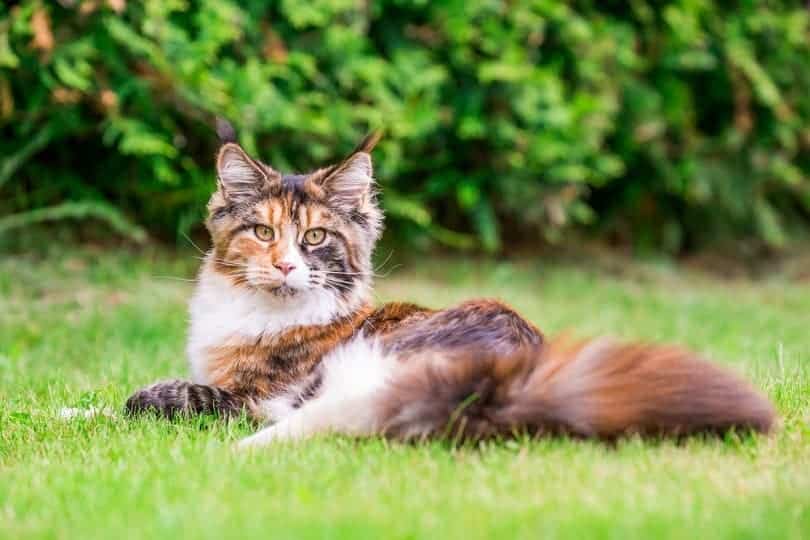
Size-Related Names for Your Sizeable Cat
Are you on the hunt for a name that truly captures the size of the monstrous Maine Coon? Here are some great names that put an emphasis on size:
- Titan
- Magnum
- Goliath
- Zeus
- Maximus
- Hoss
- Atlas
- Rex
- Og
- Rambo
- Beast
- Athos
- Hercules
- Leon
- Balor
- Squatch
- Bear
- Hulk
- Idris
- Andre
- Cronus
- Atilla
- Silva
- Nash
- Bubba
- Jupiter
- Tiny
- Crius
- Theo
- Colossus
- Ogre
- Behemoth
- Whopper
- Argus
- Burley
- Everest
- Thea
- Luisa
- Gaia
- Beula
- Bestla
- Rhea
- Phoebe
- Dione
- Bertha
- Gamora
- Luna
- Venus
- Amazon
- Acadia
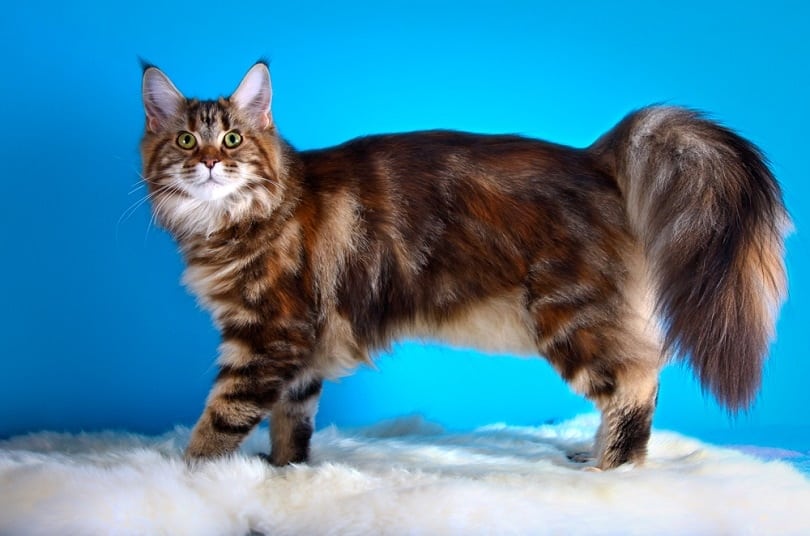
Names for those Soft, Cuddly, Long Coats
If you’re looking for a name that relates to the cuddly fluffiness of the Maine Coon’s coat, here are some options for your lovable fluff monster:
- Fizzle
- Puffalump
- Teddy
- Downy
- Fluffles
- Cloud
- Lumpkin
- Marshmallow
- Sloth
- Catsby
- Socks
- Harry
- Callie
- Wookie
- Creampuff
- Floofer
- Snow
- Cumulus
- Waffle
- Furby
- Stormy
- Wooly
- Cupcake
- Fuzzball
- Suave
- Cashmere
- Puffin
- Shaggy
- Mittens
- Oso
- Cotton
- Fluffy
- Panda
- Llama
- Pancake
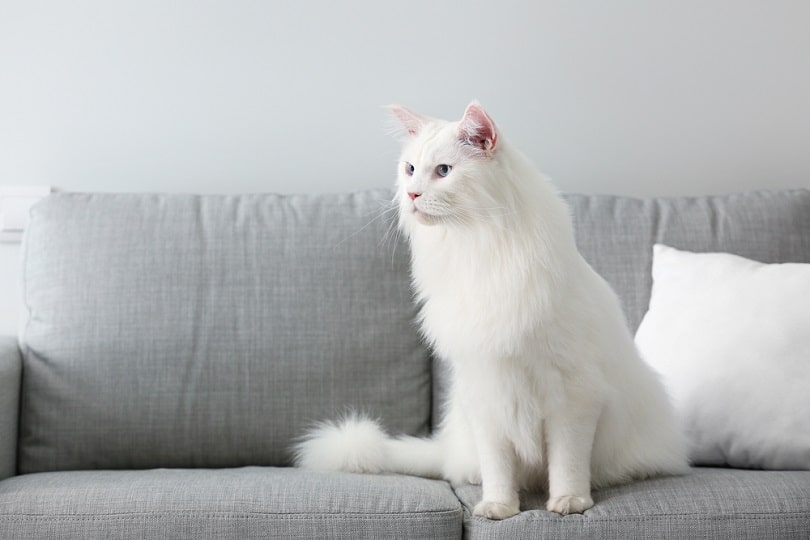
Maine Coon Name Ideas from Pop-Culture
If you’re a pop-culture lover and you’re looking for some inspiration from either the big screen or bookshelf, here are names we think work well with the Maine Coon:
- Hagrid
- Maribel
- Dwight
- Claus
- Simba
- Diana
- Camillo
- Chance
- Hobbes
- Koko
- Athena
- Calypso
- Dobby
- Bagheera
- Nala
- Crookshanks
- Clarence
- Arwen
- Ginger
- Lord Tubbington
- Keiko
- Meowth
- Miss Kitty
- Snowbell
- Pandora
- Zazzle
- Alex
- Milo
- Mrs. Norris
- Mimsie
- Duchess
- Fancy
- Sylvester
- Bilbo
- Katniss
- Gaga
- Mr. Bigglesworth
- Sassy
- Casper
- Orion
- Buffy
- Babs
- Dinah
- Lucybelle
- Zelda
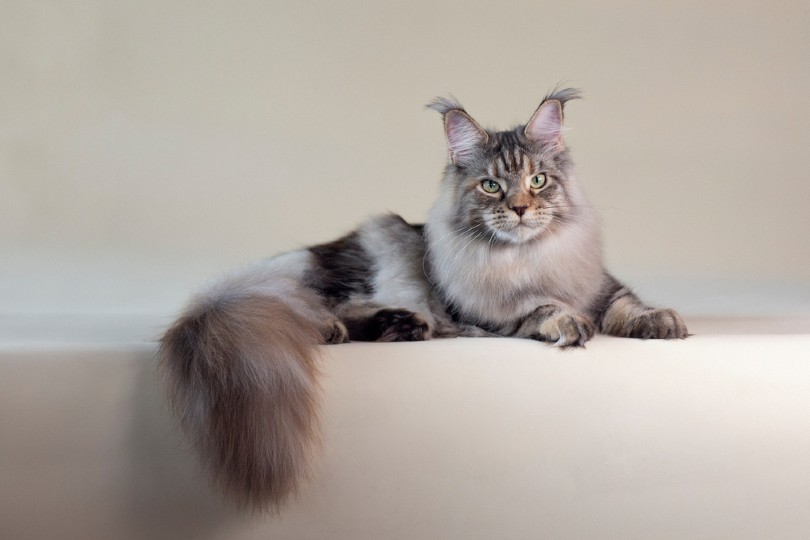
Some Fun Facts About the Maine Coon
- They are called gentle giants because of their size and excellent temperament.
- Maine Coons are excellent hunters and started as mousers in the Northeastern United States.
- They are thought to have been brought to America by the Vikings.
- It is said that up to 40 percent of Maine Coons are polydactyl (having 6 toes.)
- Maine Coons are made for the winter with their heavy coats and large, tufted paws.
- The Maine Coon was named the official state cat of Maine in 1985.
- Norris, the pet cat of Argus Filch in the Harry Potter series, was played by a Maine Coon.
- A Maine Coon was named the World’s Longest Cat by the Guinness Book of World Records.
- Unlike most cats, Maine Coons love water and are usually excellent swimmers.
- Maine Coons are one of the largest domestic cat breeds, along with Norwegian Forest Cats and Ragdolls.
Final Thoughts
Congratulations on your new, furry feline family member (or family member to be.) There’s nothing more heartwarming than opening your home to a new addition. Maine Coons are stunningly beautiful cats that are one of the most popular breeds, and you are lucky to call one your own!
Featured Image Credit: Okeanas, Shutterstock

